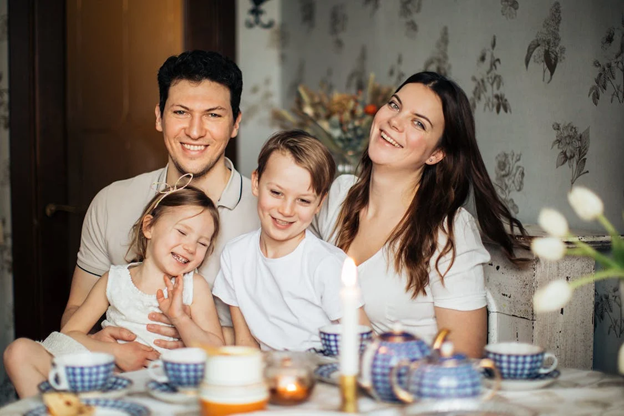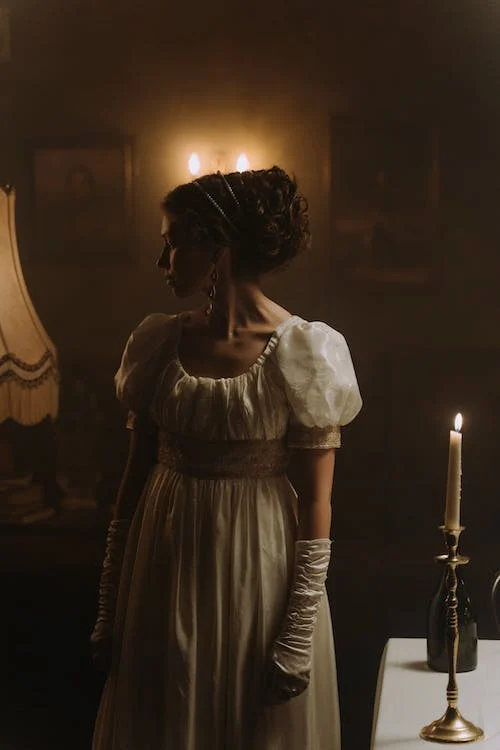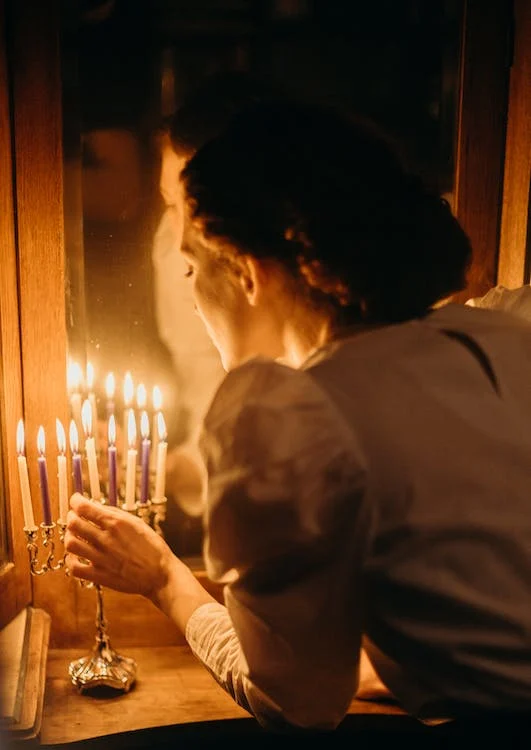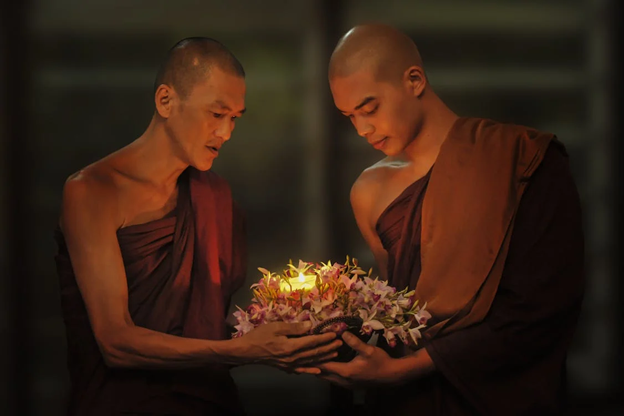Diving Deep into the Ritual of Candle Lighting
Delving into the ritual of lighting a candle is like journeying through layers of history, spirituality, and cultural nuances. This sacred act has, over time, become a medium through which humans have communicated with the divine, remembered the departed, and celebrated milestones. What starts as a simple spark holds the power to illuminate the deepest corners of our soul, bearing witness to silent prayers, unspoken wishes, and countless emotions.
Table of Contents
- 1 Diving Deep into the Ritual of Candle Lighting
- 2 Key Takeaways
- 3 A Timeline of Candle Lighting Through Ages
- 4 Lighting a Candle: A Universal Language of Emotion
- 5 The Multifaceted Role of Candles in Modern Times
- 6 Delving into Candle Etiquettes: Do’s and Don’ts
- 7 FAQs
- 8 References:
- 9 Deep Blue Mystique: Why a Lapis Stone Necklace Is Your New Must-Have

Key Takeaways
- The act of lighting a candle transcends the mere act of casting away darkness. It represents hope in despair, guiding us through the shadows of uncertainty.
- Candles have an enduring presence in various cultures, where they play pivotal roles in rituals, ceremonies, and daily spiritual practices.
- Beyond its physical luminance, a candle stands as a metaphorical luminary, enlightening us about our inner world and mysteries of the soul.
- In the age of electric lights, the humble candle retains its charm, having adapted and found its place in contemporary ceremonies and practices.
Candle Lighting in Religious and Spiritual Rituals
Every flicker of a candle in religious and spiritual settings tells a story. It narrates tales of faith, devotion, and the ceaseless human quest for a higher power. In churches, temples, mosques, and various sacred sites, candles become conduits, channeling prayers from the earthly realm to the divine.
- Christianity: Churches glow with the light of candles, especially during the Holy Eucharist, symbolizing Christ, the Light of the World.
- Hinduism: In Hindu temples, the ‘aarti’ ritual involves waving lamps in front of deities, representing one’s burning devotion and dispelling of darkness.
- Buddhism: Lighting candles in temples and at home altars signifies the light of wisdom dispelling the darkness of ignorance.
The Contrast: Electric Lights vs. Candlelight
The 21st century, with its dazzling array of electric lights, has cast a new perspective on the subtle charm of candlelight. Amidst digital screens and artificial illuminations, the organic radiance of a candle offers an experience that’s both nostalgic and deeply human.
- Authentic Ambiance: Candles offer an ambiance that electric lights often can’t replicate – they provide a warmth, a flicker, and a connection to ancient practices.
- Digital Detox: In an age of overwhelming digital exposure, candles invite us to disconnect, encouraging mindfulness and presence.
- Sensory Experience: The sound of a burning wick, the scent of melting wax, and the sight of a dancing flame engages our senses in a unique way.

A Timeline of Candle Lighting Through Ages
The history of candles is as ancient as human civilization itself. From the primitive times when they were mere sources of light, to their present-day symbolic and decorative roles, candles have evolved, echoing the journey of humanity itself.
- Ancient Civilizations: The earliest candles, made from tallow, were used by the Egyptians and Romans for both practical lighting purposes and spiritual rituals.
- Middle Ages: With the advent of beeswax candles, which burned cleaner and brighter, candles became more accessible and began to hold more ceremonial significance.
- Industrial Revolution: The mass production of candles made them commonplace in households, diminishing their exclusive religious and ritualistic roles but enhancing their decorative and therapeutic functions.
From Flames to Flickers: The Journey of Candles
The evolution of candles from simple flames to intricate sources of light, fragrance, and therapy is a testament to human innovation and the timeless allure of their gentle glow.
- Primitive Luminance: Early human civilizations used candles as primary light sources, carving them from available resources like tallow and beeswax.
- Religious Resonance: As societies grew, candles started playing pivotal roles in religious ceremonies, aiding in rituals and spiritual quests.
- Artistic Avatars: Today’s candles are not just sources of light; they’re works of art, fragrant mood enhancers, and therapeutic tools.
Lighting a Candle: A Universal Language of Emotion
While words may fall short, the simple act of lighting a candle speaks volumes. It expresses grief, joy, hope, love, and numerous emotions that often remain unspoken. Regardless of linguistic or geographical boundaries, a lit candle resonates universally, echoing human sentiments.
- Symbol of Remembrance: Lighting a candle in memory of a loved one signifies that their spirit continues to shine, undiminished by the physical absence.
- Glow of Gratitude: Many light candles as tokens of thanks, expressing gratitude to a higher power or the universe.
- Luminance of Love: Candles often play a role in romantic settings, representing the undying flame of love and passion.
The Dynamics of Light in Darkness
When a candle is lit, it disrupts the monotony of darkness, casting a glow that’s symbolic of hope amidst despair, knowledge amidst ignorance, and love amidst indifference.
- Illumination of the Soul: The light of a candle mirrors the innate human desire to seek clarity, understanding, and enlightenment.
- Duality of Existence: The coexistence of light and darkness when a candle is lit symbolizes life’s contrasts – joy and sorrow, life and death, love and loss.

The Multifaceted Role of Candles in Modern Times
In today’s rapidly changing world, candles have seamlessly integrated into various facets of contemporary life. From spas and therapeutic sessions to festive celebrations and intimate dinners, their presence is both comforting and celebratory.
- Therapeutic Touch: Candles, especially scented ones, are now staples in therapy sessions, aiding in relaxation, meditation, and stress relief.
- Festive Flambeau: Modern festivities, irrespective of cultural or religious affiliations, often feature candles, enhancing the ambiance and elevating moods.
- Everyday Elegance: Beyond special occasions, candles have found their way into daily life, gracing dinner tables, bathtubs, and living spaces with their subtle charm.
Lighting a Candle: A Symbol of Gender Neutrality or Bias?
In some cultures and traditions, the act of lighting a candle is often assigned gender roles. This exploration sheds light on societal norms, stereotypes, and the evolving perception of this ritual.
- Historical Context: Historically, certain religious and cultural ceremonies designated specific genders for the act of lighting candles.
- Breaking the Mold: Contemporary societies increasingly view candle lighting as a gender-neutral act, emphasizing personal choice over traditional norms.
- Societal Stereotypes: Despite evolving perceptions, some stereotypes persist, associating candle lighting with femininity, especially in the context of home decor or relaxation.

Delving into Candle Etiquettes: Do’s and Don’ts
Like any ritual or practice, lighting candles comes with its own set of etiquettes. These guidelines, shaped by traditions, safety considerations, and cultural nuances, ensure that the act remains respectful, meaningful, and safe.
- Safety First: Always ensure that candles are lit in safe environments, away from flammable materials, and are never left unattended.
- Respecting Rituals: When participating in cultural or religious ceremonies, it’s essential to be aware of and respect the specific traditions associated with candle lighting.
- Mindful of Scents: Especially in communal or shared spaces, it’s considerate to choose candles with scents that aren’t overpowering or potentially irritating to others.
The Timeliness of Candle Rituals
Timing, in many cultures, plays a critical role in the ritual of lighting candles. Whether it’s honoring the dead, celebrating a festival, or marking a significant moment, the act often aligns with specific times or phases.
- Sunset Sanctity: Many religious traditions light candles at sunset, marking the transition from day to night and invoking divine protection during the darkness.
- Moonlit Moments: Phases of the moon, especially new moons or full moons, are significant in some pagan and Wiccan traditions, where candle rituals aid in manifestation and reflection.
- Anniversary Illuminations: Lighting candles on anniversaries, be it of someone’s passing or a momentous event, symbolizes remembrance and reverence.
Scented Candles and Their Psychological Impact
The allure of scented candles goes beyond their visual appeal. Infused with various fragrances, they have the power to evoke memories, alter moods, and even promote wellbeing.
- Memory Lane: Certain scents can transport individuals back in time, reviving memories and emotions associated with specific moments or phases in their lives.
- Mood Modifiers: Fragrances like lavender or eucalyptus are known to induce relaxation, while citrusy scents can invigorate and uplift.
- Wellness Wonders: Aromatherapy candles, formulated with essential oils, can offer therapeutic benefits, from reducing anxiety to promoting better sleep.

FAQs
What are the diverse cultural traditions involving candle lighting?
Across the globe, countless cultures incorporate candle lighting in their traditions. From the Jewish Shabbat candles, signifying peace and blessings, to the Diwali festival in India, where lamps and candles illuminate homes as a victory of light over darkness, candles are integral to numerous ceremonies.
How can lighting a candle aid in meditation and mindfulness practices?
The act of lighting a candle during meditation creates a focal point. Observing its flame can aid in concentration, its gentle flicker can promote a sense of calm, and its steady light can symbolize the inner illumination meditation seeks to achieve.
What is the environmental impact of candles, and are there sustainable alternatives?
Traditional candles, especially those made from paraffin, can release pollutants. However, sustainable alternatives like soy or beeswax candles burn cleaner and are eco-friendlier. Choosing candles with natural wicks and fragrances further reduces environmental impact.
What are the symbolic meanings of different candle colors?
Different colors hold varied symbolic meanings. For instance, white candles often symbolize purity and peace, red can represent love and passion, green might be used for prosperity and health, while blue can signify calm and clarity.
How has the art of candle making evolved, and what are its spiritual connotations?
The art of candle making has transitioned from a necessity in ancient times to a craft in the modern world. Spiritually, crafting candles can be a meditative process, with creators infusing intentions, blessings, or specific energies into their creations.
References:
Barbieri C., Borsotto P. In: Essential Oils: Market and Legislation. El-Shemy H., editor. Potential of Essential Oils, IntechOpen; London, UK: 2018. pp. 107–1
Hussain H., Al-Harrasi A., Green I.R. Essential Oils in Food Preservation, Flavor and Safety. Elsevier; Amsterdam, The Netherlands: 2016. Frankincense (Boswellia) Oils; pp. 431–440.
Burger P., Plainfossé H., Brochet X., Chemat F., Fernandez X. Extraction of natural fragrance ingredients: History overview and future trends. Chem. Biodivers. 2019;16:e1900424. doi: 10.1002/cbdv.201900424.
Leave a Reply